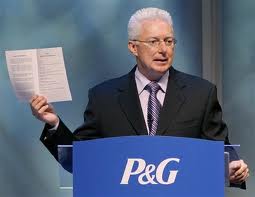Critical Thinking and VUCA

It’s complicated.
When I teach critical thinking, I don’t focus much attention on the environment that we’re thinking in. We learn how to identify assumptions, assess evidence, understand our biases, and reach rational conclusions. The assumption in all this (and it’s a big one) is that these critical thinking processes will work in any environment.
But will they? What if you’re working in a VUCA environment? VUCA is a trendy acronym that originated in military planning circles. How do we teach our military leaders to make good decisions in environments that are Volatile, Uncertain, Complex, and Ambiguous? In a VUCA world, the environment in which we make decisions comes to the fore and may overshadow our thinking processes.
Indeed, in a VUCA world, one might conclude that planning, strategy, logic, and critical thinking are useless. As Nathan Bennett points out, even experienced business leaders are tempted to conclude that, “Hey! It’s a crazy world out there! What’s the use of planning?” (See also here).
Interpreting VUCA as one thing can indeed be overwhelming. But VUCA isn’t one thing – it’s four things. The first step in dealing with VUCA is to analyze which elements are most salient. Then we can adjust our strategy accordingly.
Let’s look at each of the four elements of VUCA:
Volatile – things are changing quickly. We need to understand the dynamics, speed, and direction of change. Just because the environment is volatile, however, doesn’t mean that it’s unpredictable. Disruptive innovations, for instance, create volatility but not uncertainty. If we understand the dynamics of disruption, we can make remarkably good predictions.
Uncertain – the environment is unpredictable; surprises happen all too often. Note that uncertainty doesn’t necessarily imply volatility. For instance, our society is certainly changing but the pace is rather slow. What’s uncertain is the direction of change.
Complex – there are a lot of moving parts and it’s not quite clear how they’re connected or how they interact with each other. It’s impossible to tell what will happen if I flip this switch or pull that lever. We regularly see this in political and economic debates. Will lowering taxes lead to greater growth and, therefore, higher tax revenues? Well … it’s complicated. Note that complexity is not the same as uncertainty or volatility.
Ambiguous – the signs are not clear and it’s easy to misinterpret what’s actually happening. We may confuse cause and effect. For instance, people who own their own homes are less likely to commit crimes. So, a government might institute a program to help people buy their own homes with a goal of reducing the crime rate. But what if we’ve confused cause with effect? What if people who don’t commit crimes are more likely to own their own homes rather than vice-versa? Cause and effect are often ambiguous. It’s useful to study them closely.
Taking VUCA as a single, integrated phenomenon can lead to a sense of futility and hopelessness. If the world is entirely random and chaotic, what can we mere mortals do? The trick is to decompose VUCA into its component parts. Analyze each component and then start plotting a strategy. (More on this in future posts).
VUCA environments call for a good dose of fluid intelligence to complement the crystallized intelligence in your organization. They also require a strong dose of critical thinking. Indeed, the more VUCA your environment, the more critical becomes critical thinking.
Success and Serendipity

Anything could happen.
Carl von Clausewitz, the renowned German military strategist, wrote that “No campaign plan survives first contact with the enemy.” It’s good to plan, organize, and coordinate but remember that the enemy will always do something unexpected. Resilience – the ability to react to new realities and change direction as needed – is probably the single most important variable in battlefield success.
Clausewitz, of course, was focused on war planning. At the risk of being presumptuous, I’d like to paraphrase the thought: No business plan survives first contact with reality. As in warfare, it’s good to plan ahead. But don’t stick to the plan blindly. Be observant and pragmatic. As you learn more about reality, adjust the plan accordingly and do it quickly.
We all like to make predictions, of course, but reality intervenes. Odd things happen. Weird coincidences occur. As we learned a few weeks ago, we all confabulate. We make up stories to explain what happened in the past. By understanding the past, we should be able to control the future.
Unfortunately, the stories we confabulate about the past are never completely true. Too many things happen serendipitously. We may think that X caused Y but reality is much more complicated and counter-intuitive. Another German, Georg W.F. Hegel probably said it best: “History teaches us nothing except that it teaches us nothing.”
If we can’t predict the future, why bother to write a business plan at all? Because it’s useful to lay out all the variables, understand how they inter-relate, and tell a story about the future. Once you have a story, you can adjust it. You can tell how closely your thinking relates to reality and change your plans accordingly. It’s like tailoring a new set of clothes. Following a pattern will get you close to a good fit. But you’ll need several fittings – a nip here, a tuck there – to make the ensemble fit perfectly.
This approach to planning also emphasizes the importance of serendipity. My favorite definition of serendipity is “…an aptitude for making desirable discoveries by accident.” If you could predict the future accurately, you wouldn’t need serendipity – you would simply follow the plan. Since you can’t predict the future, you need to promote serendipity as part of your plan.
How do you promote serendipity? The simple answer is that you do new things. Talk to different people. Take a different route to work. Study a new language. Travel to a new country. Take a course in a new discipline. Don’t ever assume that you know what you’re doing. Remember what Louis Pasteur said, “Chance favors the prepared mind.” Never let an accident go to waste.
Circuses and Oceans
The first time we went to Cirque de Soleil, we took Elliot and a bunch of his 12-year-old buddies. After all, circuses are for kids, right? As it turned out, Suellen and I enjoyed the show just as much — maybe more — than the kids did. I didn’t expect that.
Cirque de Soleil is an excellent example of a mashup innovation. Traditional circuses were for kids. I remember going to Ringling Brothers with my folks. I was dazzled by Uno — the man who could do a handstand on one finger. My parents were troupers but I don’t think they were dazzled. They took me because … well, circuses are for kids.
On the other hand, Broadway musicals are from grownups. They have a bit of a story to follow, they have some conflict, perhaps some mushy stuff, and a resolution. Most of all they have singing. This is where young kids start squirming. I mean, really … how many seven-year-olds want to know that when you’re a Jet, you’re Jet all the way?
The genius of Cirque de Soleil is that it mashes up the traditional circus — get the kids — with Broadway musicals — bring the grownups, too. There’s enough of a story to appeal to Mom and Dad and enough cool (and weird) stuff to appeal to seven-year-olds. It’s family entertainment for modern city dwellers.
While Cirque is a great mashup story, it may be more than that. According to W. Chan Kim and Renee Mauborgne, it’s also a great example of a Blue Ocean Strategy. For Kim and Mauborgne, there are red oceans and blue oceans. A red ocean is full of the blood of competitive strife — it’s red in tooth and claw. The red ocean represents a market of a given size. It’s not going to get any bigger so the only way for one company to grow is to make another company shrink. Strategy is all about defeating the competition rather than winning the customer. As Kim and Mauborgne point out, the market for traditional circuses was very much a red ocean.
A blue ocean, on the other hand, allows you to jump beyond the competition. You create something new and, in doing so, you create a new market where your traditional competitors are irrelevant. The authors offer some great examples of blue ocean strategies and some intriguing and very instructive tips for how to develop one. For Kim and Mauborgne, the genius of Cirque de Soleil is that they have leapt out of the red ocean and into a blue ocean where they rule the waves. Indeed, they’re the only ship in sight.
I’ll report on more blue ocean examples in future posts. At the same time, however, I have a nagging feeling that a blue ocean is not that different from the classic marketing strategy of creating a new category. Once upon a time, for instance, sedans were practical but not much fun to drive. (For my British readers, what Americans call a sedan, you call a saloon). On the other hand, sports cars were fun to drive but not very practical. Then BMW mashed up the two categories and created a sports sedan — practical yet fun to drive. Was the BMW sports sedan a new category or a blue ocean? I’ll report more on that in the future. No matter what you call it, however, mashups are a great way to get there.
Strategy: Five Components
A.G Lafley is justifiably famous for taking over Procter & Gamble (P&G) and converting an insular company into a customer-centric, outward-looking culture known for a string of successful innovations. When Lafley became CEO in 2000, innovation was driven by thousands of in-house R&D designers, researchers, and engineers. They created neat stuff and “pushed” it to customers. Partially as a result, P&G’s success rate with new products and brands hovered around 15%. The R&D teams focused internally; only about 10% of new products came from outside the company.
Lafley essentially turned the company inside-out by putting the customer at the head of the innovation process. P&G called it Connect + Develop and emphasized collaboration with other departments, customers, and even outside research organizations. Lafley changed the culture from “not invented here” to “proudly found elsewhere”. P&G signed more than 1,000 collaborative agreements with outside organizations. It was a fundamental cultural change and the results were spectacular. According to a report from A.T. Kearney, “During Lafley’s tenure, sales doubled, profits quadrupled, and the company’s market value increased by more than $100 billion”.
Now Lafley has written a book, Playing to Win: How Strategy Really Works, with Roger Martin, the Dean of the Rotman School of Management at the Univeristy of Toronto. Martin was Lafley’s “principal external strategy advisor”. In addition to Martin, Lafley built a brain trust of outside thinkers including designers and business professors. The eclectic nature of the group created many different “idea collisions” that generated process innovations as well as product innovations.
I’m sure that I’ll write a lot about the book in the future but it’s not quite out yet. It debuts in February. Today, I’m depending on the report from A.T. Kearney and a lengthy review from The Economist. One of the key insights is that P&G followed a strategy composed of five elements, each designed to help managers make the right decisions. These are:
- What does winning look like? What are we aiming for and what information do we look for along the way to help us understand if we’re making progress? Do we seek global domination, regional, or local?
- Which markets should we play in? Of course, this also implies another question: which markets should we ignore (or exit)? How do we determine which is which?
- How do we win? What’s our distinctive strategy in each market and category?
- What are our strengths and weaknesses and how do we deploy them in each market, against each competitor?
- What needs to be managed for the strategy to succeed? Of course, the inverse of this question is what doesn’t need to be managed? The Economist reports that one of Lafley’s “most important innovations was a slimmed-down strategy-review process … [that] replaced needlessly sprawling bureaucratic meetings….”
It’s a good story and an intriguing look at strategy. Unfortunately, it doesn’t have an entirely happy ending. The Economist reports that P&G has “stumbled badly” since Lafley left in 2009. Similarly, Martin’s consulting firm “got into financial difficulty and has been sold at a discount.” Still, the questions are relevant to any company’s strategy and the story is intriguing. I’ll report more soon.

